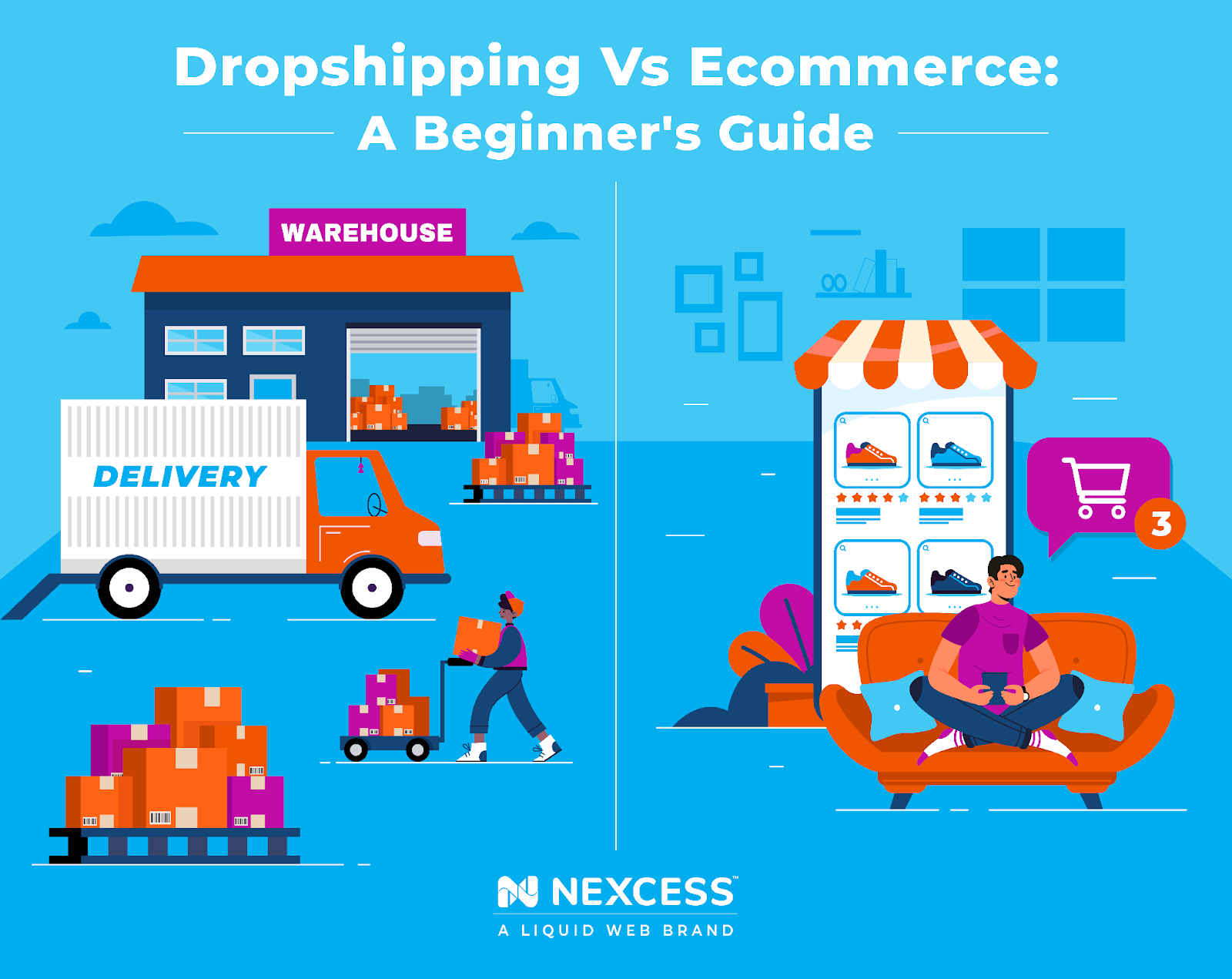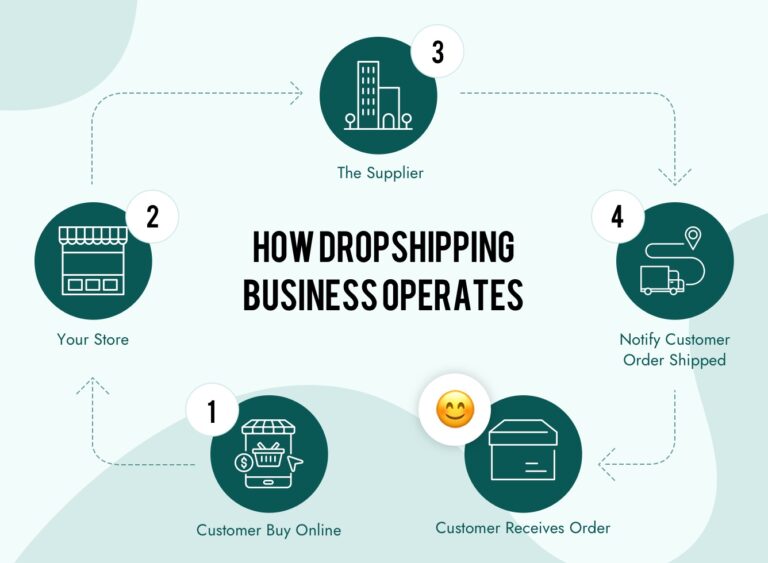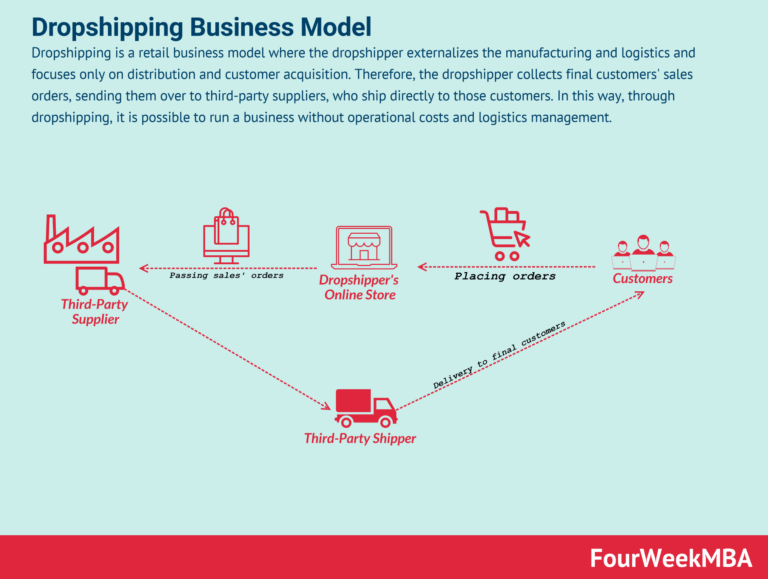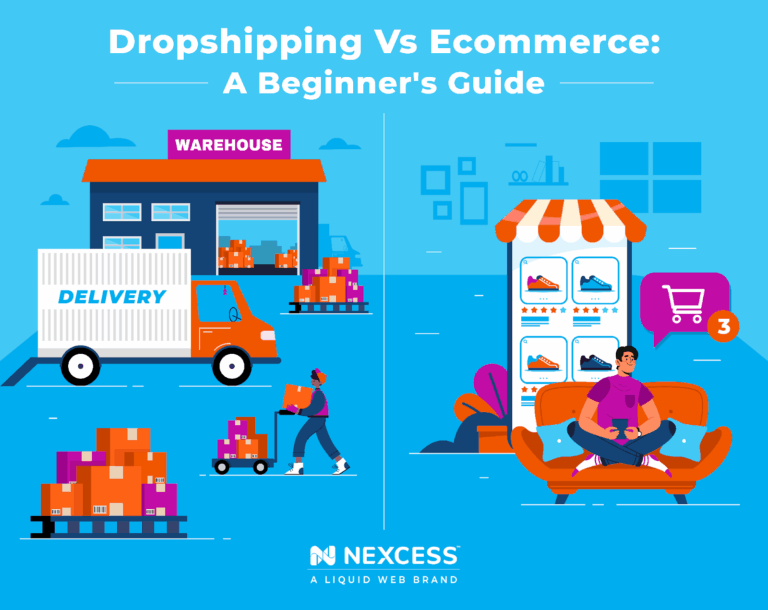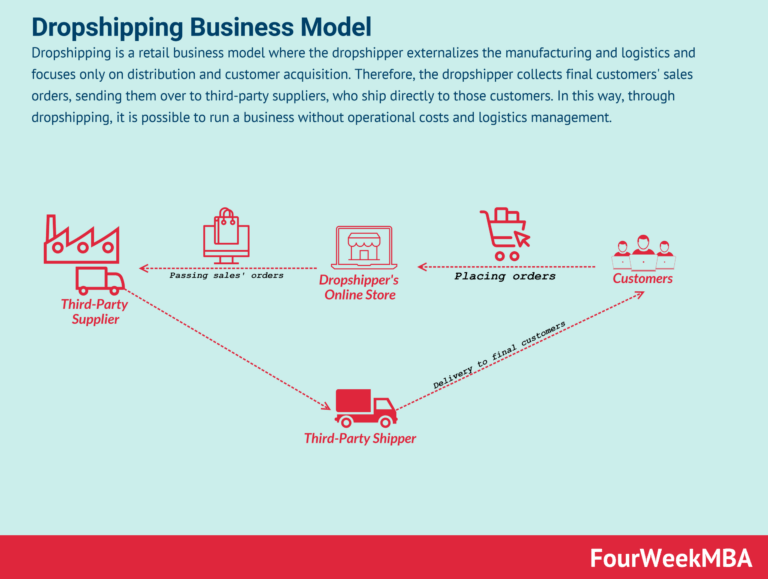How to Start Dropshipping in 2025 (A Beginner’s Guide)
Your Complete Guide to dropshipping ecommerce business
Welcome to Your Entrepreneurial Journey
Congratulations on taking the first step toward becoming an entrepreneur! The desire to build your own business is a powerful ambition, and you’re not alone in this pursuit. Many aspiring entrepreneurs like you are looking for a way to enter the world of e-commerce with minimal investment and risk. If this resonates with you, then dropshipping might just be the perfect business model to turn your dreams into reality.
So, what exactly is dropshipping? At its core, dropshipping is a retail fulfillment method that allows you to sell products directly to consumers without ever needing to hold inventory. When a customer places an order in your online store, you simply forward that order to a supplier who then ships the product directly to the customer. This means you can focus on what truly matters—marketing and growing your brand—without the headaches of managing inventory or shipping logistics.
One of the most appealing aspects of dropshipping is the low startup cost. Unlike traditional retail models, where you must invest heavily in stock and storage, dropshipping allows you to start your business with minimal financial commitment. This flexibility extends beyond just costs; you can operate your business from anywhere in the world as long as you have an internet connection. This means you have the freedom to work from home, a café, or even while traveling.
In this guide, we will provide you with a comprehensive roadmap to navigate the world of dropshipping. You’ll learn how to identify profitable products, select reliable suppliers, set up your online store, and effectively market your offerings to your target audience. By the end of this guide, you will be equipped with the knowledge and tools you need to make your first sale and begin your journey toward financial independence.
Starting a dropshipping business is not just about making money; it’s about creating a lifestyle that aligns with your passions and goals. With determination and the right strategies, you can transform your entrepreneurial dream into a successful reality. Let’s embark on this exciting adventure together and unlock the potential that awaits you in the world of dropshipping!
What You’ll Learn In This Guide
- Your Complete Guide to dropshipping ecommerce business
- How Does Dropshipping Actually Work? A Step-by-Step Breakdown
- The Pros and Cons of Dropshipping: Is It Right for You?
- Step 1: Finding a Profitable Niche and Winning Products
- Step 2: Choosing the Right Dropshipping Suppliers
- Step 3: Building Your Online Store
- Step 4: Marketing Your Dropshipping Business to Get Sales
- Common Mistakes to Avoid as a Beginner
- Frequently Asked Questions (FAQs) about dropshipping ecommerce business
- Conclusion: Your Next Steps to Launching Your Business
- Important Disclaimer
How Does Dropshipping Actually Work? A Step-by-Step Breakdown
Understanding the Dropshipping Process: A Step-by-Step Breakdown
Starting a dropshipping business is an exciting venture that allows you to sell products without the overhead of managing inventory. Think of yourself as the digital storefront and middleman, connecting customers with suppliers. Let’s break down the dropshipping model into clear, actionable steps to help you understand how the flow of money and goods works.
1. Customer Places an Order on Your Online Store
The journey begins when a customer visits your online store and finds a product they want to purchase. They add the item to their cart and proceed to checkout, where they enter their shipping information and payment details. This is your moment to shine—make sure your website is user-friendly and visually appealing to encourage sales.
2. You Receive the Payment
Once the customer completes their order, the payment is processed through your e-commerce platform. You’ll receive the full amount of the sale, minus any transaction fees charged by your payment processor. This is the first point of income for you as the seller. Ensure that your payment processing system is secure and efficient to build trust with your customers.
3. You Forward the Order to Your Supplier
After you’ve received the payment, it’s time to take action. You forward the order details to your dropshipping supplier. If you’re using a dropshipping app, this process can be automated, making it seamless. The order details include the product information and the customer’s shipping address. You act as the intermediary here, ensuring that the correct product is sent to the right customer.
4. The Supplier Ships the Product Directly to the Customer
Once your supplier receives the order, they handle the rest. They will package the product, often including a branded invoice or packing slip featuring your store’s information, and ship it directly to the customer. This step is crucial because it maintains your brand identity in the eyes of the customer. While you don’t physically handle the product, you are responsible for ensuring that the supplier delivers a quality experience.
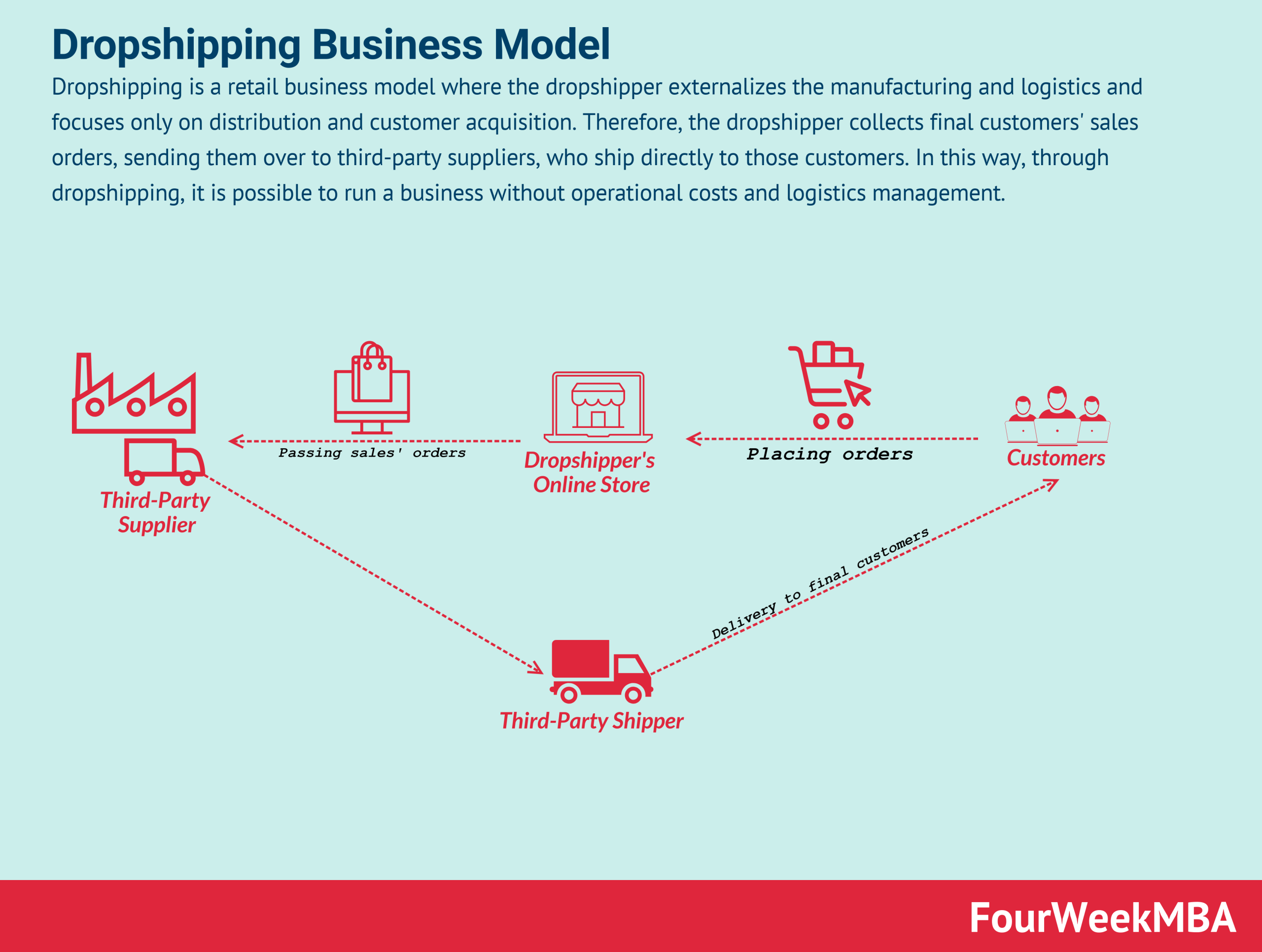
The Flow of Money and Goods
To visualize the flow of money and goods in the dropshipping model, consider this analogy: you are like a restaurant that doesn’t cook the food but serves as the middleman between the diner and the chef. Here’s how the flow works:
- Customer Payment: The customer pays you directly for the product. This is your revenue.
- Order Placement: You place the order with your supplier using the funds received from the customer.
- Supplier Fulfillment: The supplier ships the product directly to the customer. You never handle the product, but you ensure that the customer receives it.
Conclusion
Dropshipping offers a unique opportunity for aspiring entrepreneurs to enter the e-commerce space with minimal investment. By understanding each step in the process—from receiving orders to forwarding them to suppliers—you can effectively manage your online store. Remember, while dropshipping minimizes risks related to inventory, your success will largely depend on your marketing strategies, customer service, and ability to choose reliable suppliers. Embrace the journey, stay committed, and watch your business thrive!
The Pros and Cons of Dropshipping: Is It Right for You?
Advantages and Challenges of Dropshipping
When considering dropshipping as a business model, it’s crucial to weigh both its benefits and challenges. Below is a detailed comparison to help you determine if dropshipping is the right fit for your entrepreneurial journey.
| Advantages of Dropshipping (Pros) | Challenges of Dropshipping (Cons) |
|---|---|
| Low Financial Risk | Low Profit Margins |
| Dropshipping requires minimal upfront investment, as you don’t need to purchase inventory upfront. | The competition in dropshipping can drive prices down, resulting in lower profit margins per sale. |
| Wide Selection of Products | Limited Control Over Supply Chain |
| You can offer a vast array of products without worrying about unsold inventory, allowing for flexibility in your offerings. | You depend on suppliers for product quality and shipping, which can lead to issues outside your control. |
| No Product Development Costs | Shipping Complexities |
| There’s no need for investment in product development, allowing you to focus on marketing and sales. | Managing shipping times and costs can be complicated, especially with international suppliers. |
| Flexible Location | Customer Service Burden |
| You can run a dropshipping business from anywhere with an internet connection, providing lifestyle flexibility. | You handle all customer service inquiries, which may involve issues you didn’t cause, like delays or defects. |
| Easier to Start and Scale | High Competition |
| Setting up a dropshipping store is straightforward, and scaling is easier as you can add products without inventory concerns. | The low barrier to entry means many entrepreneurs enter the market, increasing competition for customers. |
| Market Responsiveness | Branding Challenges |
| You can quickly adapt to market trends by adding or removing products based on demand. | Limited opportunities for branding can hinder customer loyalty and repeat business. |
| Automation Potential | Reliance on Suppliers |
| Many processes can be automated with dropshipping apps, saving you time on order processing and inventory management. | You are reliant on suppliers for inventory levels and fulfillment, which can affect your business’s reliability. |
Expanding on the Advantages
One of the most significant advantages of dropshipping is low financial risk. Since you don’t need to invest heavily in inventory upfront, you can start your business with minimal capital. This makes dropshipping an attractive option for beginners and those looking to test the waters of e-commerce without committing substantial funds.
Additionally, the wide selection of products available through dropshipping allows you to diversify your offerings quickly. This flexibility is particularly beneficial in a fast-paced market where trends can shift rapidly. You can easily pivot your product selection based on consumer demand, ensuring that your store remains relevant and appealing.
Another key benefit is the ease of scaling. As your business grows, you can add new products without worrying about inventory management. This scalability allows you to expand your business at your own pace, accommodating increased customer demand without the logistical headaches traditional retail models face.
Addressing the Challenges
Despite its many advantages, dropshipping does come with notable challenges. One of the primary concerns is low profit margins. The ease of entry into the dropshipping market means that many entrepreneurs compete for the same products, often leading to price wars. This can squeeze your margins, making it essential to find unique products or niche markets to enhance profitability.
Additionally, limited control over the supply chain can be a significant drawback. Since you rely on third-party suppliers for product quality and shipping, any issues they encounter can reflect poorly on your business. If a supplier fails to deliver on time or provides subpar products, you are the one who must handle the fallout with your customers.
Finally, the customer service burden falls squarely on your shoulders. While you don’t handle the physical products, any issues related to shipping delays, damaged goods, or returns will require your attention. This aspect can be challenging, especially when dealing with suppliers who may not prioritize your business.
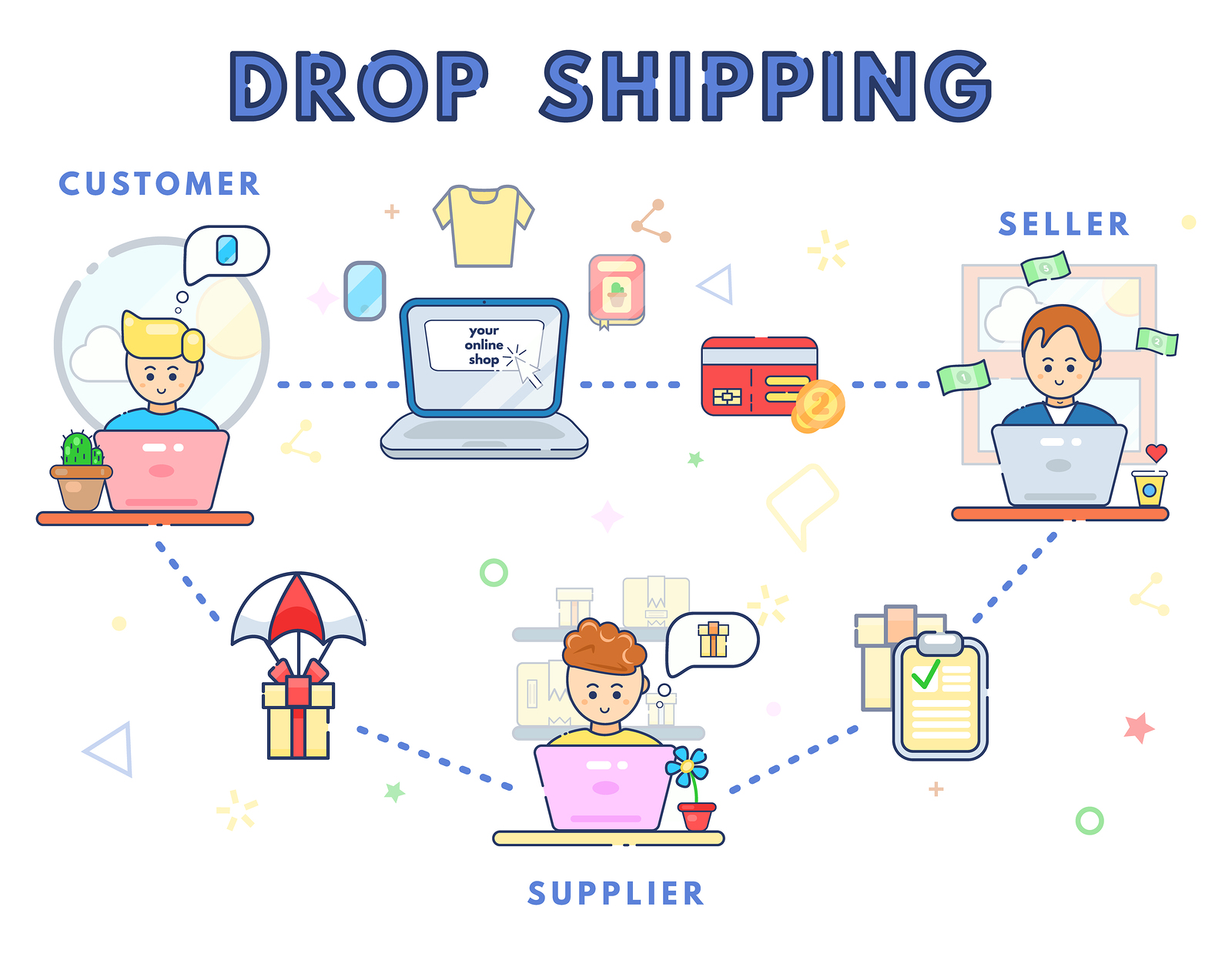
Conclusion
In summary, dropshipping offers a compelling business model for aspiring entrepreneurs, particularly those looking to minimize financial risk and start a flexible online business. However, it’s important to remain aware of the challenges, including low profit margins and the need for effective customer service management. By understanding both the pros and cons, you can make an informed decision about whether dropshipping aligns with your business goals and personal capabilities.
Step 1: Finding a Profitable Niche and Winning Products
What Makes a Good Niche?
Choosing the right niche is crucial for your dropshipping success. A good niche balances your interests, market demand, and profitability potential. Here are key elements that define a successful niche:
-
Passion and Interest: It’s easier to stay motivated and engaged if you’re selling products that you are passionate about. Consider your hobbies, interests, and expertise. This personal connection can give you an edge in marketing and customer engagement.
-
Market Demand: Use tools like Google Trends, keyword research tools, and social media analytics to gauge interest in your potential niche. Look for products that have consistent or growing search volumes.
-
Competition Analysis: A niche with too much competition can be difficult to penetrate. Conversely, one that is too obscure may not have enough demand. Strive for a balanced niche where competition exists but not so much that it’s saturated. Analyze competitors’ strengths and weaknesses to identify opportunities.
-
Profitability: Evaluate the potential profit margins in your niche. A good rule of thumb is to look for products with a retail price that allows for a markup of at least 30-50% after considering costs such as shipping, advertising, and supplier fees.
-
Longevity: Trends come and go, but a good niche should have the potential for longevity. Assess whether the niche has seasonal demand or if it’s more evergreen.
How to Brainstorm Niche Ideas
Brainstorming is an essential step in finding your niche. Here are some actionable methods to help you generate ideas:
-
Explore Your Interests: Make a list of your hobbies, skills, and experiences. Think about what you enjoy doing and what problems you often solve for yourself or others.
-
Identify Pain Points: Consider common problems people face in everyday life. What solutions can you provide? Addressing pain points often leads to high-demand products.
-
Utilize Online Tools: Leverage platforms like Google Trends, Answer the Public, and Ubersuggest to see what people are searching for. These tools can reveal trending topics and questions, helping you identify potential niches.
-
Social Media Research: Platforms like Instagram, Pinterest, and TikTok are great for discovering emerging trends. Look at popular hashtags, influencers, and viral products to gauge what’s resonating with consumers.
-
Competitive Research: Analyze successful dropshipping stores and e-commerce platforms like Amazon and Etsy. Identify what products are popular and look for gaps in their offerings that you could fill.
-
Join Niche Communities: Engage in forums, Reddit, and Facebook groups related to your interests. Pay attention to discussions and recommendations to identify unmet needs and potential products.
Validating Your Niche
Once you have a niche idea, validating it is essential to ensure its viability. Here’s how to do it:
-
Market Research: Conduct surveys or polls within your target audience. Use tools like Google Forms or Typeform to gather feedback on your niche and potential products.
-
Competitor Analysis: Study your competitors in the niche. What are they doing well? What gaps exist in their offerings? Use tools like SEMrush or Ahrefs to analyze their traffic and keywords.
-
Test Products: Before fully committing, consider testing a few products within your niche. Use platforms like eBay or Etsy to gauge demand. If possible, run small ad campaigns to see which products attract interest.
-
Engage with Potential Customers: Utilize social media or forums to engage with your target audience. Ask questions and solicit feedback about your niche and product ideas.
-
Evaluate Online Marketplaces: Check marketplaces like AliExpress or Amazon for product reviews and ratings. High ratings and positive feedback can indicate a product’s potential success in your niche.
Methods for Finding Winning Products
Once you have validated your niche, the next step is to identify winning products. Here are effective methods to find them:
-
Supplier Marketplaces: Platforms like AliExpress, Oberlo, and SaleHoo are treasure troves for dropshipping products. Look for items with high order volumes and positive reviews. Analyze the supplier’s reliability and shipping times.
-
Social Media Trend Tools: Use tools like BuzzSumo or TrendSpottr to discover trending products and content. Monitor which products are being shared and discussed on social platforms to identify potential winners.
-
Search for Unique Products: Focus on products that solve specific problems or are not readily available in local stores. This can include niche gadgets, eco-friendly products, or specialized tools that cater to particular interests.
-
Criteria for a Good Dropshipping Product:
- Price Point: Aim for products priced between $20 and $100. This range allows for a healthy profit margin while remaining affordable for most consumers.
- Lightweight and Easy to Ship: Products that are small and lightweight reduce shipping costs and complications, leading to better customer satisfaction.
- High Demand: Look for products with consistent demand. Check search volumes, social media mentions, and sales data to ensure they are sought after.
-
Quality and Reliability: Prioritize products from reputable suppliers. Order samples to assess quality yourself, ensuring that you can confidently stand behind your offerings.
-
Utilize Google and Amazon: Conduct searches for your niche products on Google and Amazon. Analyze the first pages of results to identify what’s trending. Pay attention to the “Best Seller” and “Amazon Choice” labels for insights into high-demand items.
-
Monitor Customer Reviews: Read customer reviews for insights into what users like or dislike about existing products. This can help you refine your offerings and identify potential improvements or unique selling propositions.
Conclusion
Finding a profitable niche and winning products is a foundational step in your dropshipping journey. By combining passion with thorough research, validation, and strategic product selection, you can position yourself for success. Remember, this process may take time, but persistence and adaptability will pay off as you build your online business. Stay curious, keep learning, and embrace the entrepreneurial spirit!
Step 2: Choosing the Right Dropshipping Suppliers
Finding Reliable Dropshipping Suppliers
When starting a dropshipping business, one of the most crucial decisions you’ll make is choosing the right suppliers. Your suppliers are your partners in success, handling the logistics of storage, packaging, and shipping. The quality of your suppliers can significantly impact your customer satisfaction, delivery times, and ultimately, your business reputation. Here’s a comprehensive guide to help you find reliable dropshipping suppliers, including some of the most popular platforms.
AliExpress
Overview
AliExpress is one of the largest online retail platforms, connecting suppliers, mainly from China, with international buyers. It offers a vast array of products across numerous categories, making it a popular choice for dropshippers.
Pros
– Wide Product Range: With millions of items available, you can find almost any product you want to sell.
– Low Prices: Many suppliers offer competitive pricing, allowing for good profit margins.
– Easy to Use: The platform is user-friendly, and there are many tools available to facilitate order processing.
– No Minimum Order Quantity: You can order a single item, making it ideal for dropshipping.
Cons
– Long Shipping Times: Products shipped from China can take weeks to arrive, which may frustrate customers.
– Variable Quality: The quality of products can vary significantly between suppliers; it’s essential to vet suppliers carefully.
– Limited Customer Service: AliExpress acts as a marketplace, which means customer service can be inconsistent.
CJ Dropshipping
Overview
CJ Dropshipping is a comprehensive dropshipping solution that provides sourcing, warehousing, and shipping services. It offers products from various suppliers and has warehouses in multiple countries, including the U.S.
Pros
– Faster Shipping Options: With warehouses located in various countries, CJ can offer quicker shipping times compared to suppliers based in China.
– Quality Control: CJ performs quality checks on products, ensuring better consistency.
– Custom Branding: Offers services for custom packaging and branding, which can enhance your brand’s image.
– Integrated Services: The platform provides a range of services, including product sourcing and order fulfillment.
Cons
– Higher Costs: Compared to AliExpress, prices may be higher, which can affect profit margins.
– Learning Curve: The platform can be complex for beginners, requiring time to understand all its features.
– Limited Product Range: While they have a good selection, it may not be as extensive as AliExpress.
USA-Based Suppliers
Overview
Working with suppliers based in the U.S. can significantly improve your shipping times and customer satisfaction. Many platforms, such as Spocket or SaleHoo, connect dropshippers with U.S.-based suppliers.
Pros
– Fast Shipping: Typically, U.S.-based suppliers can offer 2-5 day shipping, leading to higher customer satisfaction.
– Better Communication: Time zone alignment and language can make communication easier and more effective.
– Higher Quality: Many U.S. suppliers offer better quality products and customer service.
Cons
– Higher Prices: Products from U.S. suppliers can be more expensive than those from overseas, affecting your pricing strategy.
– Limited Product Range: The selection may not be as vast as what you can find on international platforms.
– Fewer Suppliers: There may be fewer options in niche markets compared to global platforms.
What to Look for in a Good Supplier
When evaluating potential dropshipping suppliers, keep the following checklist in mind:
- Communication: Ensure the supplier is responsive and easy to communicate with. Quick replies to inquiries are a good sign.
- Shipping Times: Check the shipping times to various regions. Faster shipping can enhance customer satisfaction.
- Product Quality: Order samples to evaluate the product quality before listing them in your store. Quality control is essential.
- Return Policies: Understand their return and refund policies. A straightforward process will make handling customer issues easier.
- Reliability: Look for suppliers with a good track record. Reviews and ratings from other dropshippers can provide insights.
- Pricing: Compare pricing with other suppliers to ensure you can maintain healthy profit margins.
- Integration: Check if the supplier can integrate with your e-commerce platform for smoother order processing.
- Location: Consider the location of the supplier, as this will impact shipping times and costs.
- Scalability: Ensure the supplier can handle increased order volumes as your business grows.
Conclusion
Finding the right dropshipping suppliers is crucial for the success of your e-commerce business. Each platform has its pros and cons, and the best choice depends on your specific needs, target market, and business model. By following the guidelines above and using the checklist, you can identify suppliers that align with your business goals, ultimately leading to a smoother operation and happier customers. Remember, building strong relationships with your suppliers can lead to better service, improved product quality, and a more successful business overall. Happy dropshipping!
Step 3: Building Your Online Store
Setting Up Your Dropshipping Store on Shopify
Creating an online store for your dropshipping business is an exciting step in your entrepreneurial journey. Shopify is widely regarded as one of the best platforms for dropshipping due to its user-friendly interface, robust features, and extensive app ecosystem. This guide will walk you through the essential steps to build your online store, ensuring you’re well-prepared to launch your business.
1. Choosing a Shopify Plan
Before diving into the design and functionality of your store, you need to select a Shopify plan that suits your business needs. Shopify offers several pricing tiers:
- Basic Shopify: Ideal for beginners, this plan includes essential features to get your store up and running.
- Shopify: This plan provides additional features for growing businesses, including more advanced reporting and gift cards.
- Advanced Shopify: Perfect for larger businesses, it offers advanced reporting and lower credit card rates.
Consider starting with the Basic Shopify plan, which allows you to access all the necessary tools for dropshipping without a hefty upfront investment. You can always upgrade later as your business grows.
2. Picking a Theme
Once you’ve chosen your plan, it’s time to select a theme for your store. Shopify offers a range of free and paid themes that cater to different niches and aesthetics.
- Free Themes: Shopify has several well-designed free themes that are fully customizable and responsive. Themes like “Debut” or “Brooklyn” are excellent options for newcomers.
- Paid Themes: If you want something unique, consider investing in a paid theme. These typically offer more features and customization options.
When selecting a theme, ensure it reflects your brand identity and provides a smooth user experience. Look for themes that are mobile-responsive, as a significant portion of online shopping occurs on mobile devices.
3. Setting Up Essential Pages
Creating essential pages is crucial for building trust with your customers. Here are the key pages you should include:
- About Us: Share your story, mission, and values. This page helps customers connect with your brand on a personal level.
- Contact: Provide multiple ways for customers to reach you, including email, phone, or a contact form. Quick responses to inquiries can significantly enhance customer satisfaction.
- Policies: Clearly outline your policies regarding shipping, returns, and privacy. This transparency helps manage customer expectations and reduces potential disputes.
To create these pages, navigate to the “Online Store” section in your Shopify admin panel, then select “Pages” and add new pages as needed.
4. Installing Key Apps
To enhance your store’s functionality, you’ll want to install key apps that streamline your dropshipping process. Here are a few essential apps to consider:
- DSers: This app simplifies the process of importing products from AliExpress to your Shopify store. It allows you to manage orders efficiently and helps automate order fulfillment.
- CJ Dropshipping: An alternative to DSers, CJ Dropshipping offers a wide range of products and fulfillment options. Their services include product sourcing, warehousing, and shipping.
- Oberlo: If you prefer to source products from AliExpress, Oberlo is a fantastic choice. It integrates seamlessly with Shopify and allows you to import products directly into your store.
To install these apps, go to the Shopify App Store, search for the app, and click “Add app” to integrate it with your store.
5. Setting Up Payment Gateways
Your store needs to accept payments to process customer orders. Shopify supports various payment gateways, including:
- Shopify Payments: This is Shopify’s built-in payment processor, which allows you to accept credit cards directly without third-party fees.
- PayPal: A widely used payment method that enhances customer trust.
- Other Payment Gateways: Depending on your location, you may want to consider options like Stripe, Authorize.Net, or Square.
To set up payment gateways, go to “Settings” in your Shopify admin, then select “Payments.” Here, you can choose your preferred payment methods and configure them according to your business needs.
Alternative: WooCommerce
While Shopify is an excellent choice for dropshipping, it’s worth mentioning WooCommerce as an alternative. WooCommerce is a WordPress plugin that allows you to create an online store with extensive customization options. It’s great for those who are already familiar with WordPress and want more control over their store’s design and functionality. However, keep in mind that WooCommerce requires a bit more technical knowledge and management than Shopify.
Conclusion
Building your online store on Shopify is a straightforward process, especially when you follow these key steps. From selecting the right plan and theme to setting up essential pages, installing apps, and configuring payment gateways, you’re well on your way to launching your dropshipping business. Remember, the foundation of your online store is crucial for attracting and retaining customers, so take your time to set everything up properly.
As you embark on this exciting journey, stay focused, be adaptable, and keep learning. The e-commerce world is ever-evolving, and your commitment to improvement will serve you well in the long run. Good luck!
Step 4: Marketing Your Dropshipping Business to Get Sales
Social Media Marketing (TikTok & Instagram)
Social media platforms are powerful tools for promoting your dropshipping business. TikTok and Instagram, in particular, are ideal for showcasing products visually and reaching a broad audience. Here are some actionable tips to get you started:
- Create Engaging Content
- Tip: Use high-quality images and videos of your products. Show them in use, highlight unique features, and demonstrate benefits.
-
Example: If you sell fitness gear, post workout videos using your products. Show potential customers how they can incorporate your items into their routines.
-
Leverage User-Generated Content (UGC)
- Tip: Encourage customers to share their experiences with your products on social media. Create a branded hashtag for them to use.
-
Example: Run a contest where customers post photos with your products for a chance to win a gift card. This not only builds community but also provides you with authentic content to share on your own page.
-
Utilize Stories and Reels
- Tip: Use Instagram Stories and TikTok Reels to create short, engaging content that highlights special offers, behind-the-scenes looks, or new arrivals.
-
Example: Create a “Product of the Week” reel showcasing how to use the item, its benefits, and a limited-time discount code to encourage immediate purchases.
-
Collaborate with Influencers
- Tip: Partner with micro-influencers in your niche to reach their audience authentically.
-
Example: If you sell eco-friendly products, find influencers who focus on sustainability. They can create content featuring your items, which helps build credibility and expand your reach.
-
Engage with Your Audience
- Tip: Respond to comments, DMs, and mentions promptly. This builds rapport and encourages more interaction.
- Example: Host a Q&A session on Instagram Live where you answer questions about your products, share tips, and engage with your audience directly.
Paid Advertising (Facebook/Instagram Ads)
Investing in paid advertising can significantly boost your visibility and sales. Facebook and Instagram ads allow you to target specific demographics effectively. Here’s how to make the most of your ad budget:
- Define Your Target Audience
- Tip: Use Facebook’s Audience Insights tool to understand your potential customers’ demographics, interests, and behaviors.
-
Example: If you sell pet products, target pet owners, and filter by interests related to pets, such as dog training or pet care.
-
Create Eye-Catching Ads
- Tip: Use bold visuals and concise, compelling copy. Highlight special offers or unique selling points.
-
Example: If you’re running a promotion, use a bright, attention-grabbing image of your best-selling product with a clear call-to-action (CTA) like “Shop Now and Save 20%!”
-
A/B Testing
- Tip: Test different versions of your ads (images, headlines, CTAs) to see which performs best.
-
Example: Run two ads with different product images and analyze which one generates more clicks and conversions. Adjust your campaigns based on the results.
-
Retargeting Campaigns
- Tip: Use retargeting ads to reach users who have previously visited your site but did not make a purchase.
-
Example: Show ads featuring products they viewed or added to their cart, along with a limited-time discount to encourage them to complete their purchase.
-
Monitor and Optimize
- Tip: Regularly check your ad performance metrics (CTR, conversion rate, etc.) and optimize your campaigns accordingly.
- Example: If an ad has a low conversion rate, consider tweaking the audience targeting or the ad copy to better resonate with potential customers.
Search Engine Optimization (SEO)
SEO is vital for driving organic traffic to your dropshipping store. By optimizing your site, you can improve your search engine rankings and attract more visitors. Here’s how to get started:
- Keyword Research
- Tip: Use tools like Google Keyword Planner or Ubersuggest to find keywords relevant to your products.
-
Example: If you sell kitchen gadgets, target keywords like “best kitchen gadgets” or “unique cooking tools.” Incorporate these keywords into your product descriptions and blog posts.
-
Optimize Product Descriptions
- Tip: Write unique, informative descriptions for each product, including your target keywords naturally.
-
Example: Instead of copying the supplier’s description, create your own that highlights how the product solves a problem or enhances the customer’s life.
-
Create Valuable Content
- Tip: Start a blog related to your niche. Share tips, how-to guides, and product comparisons to attract visitors and establish authority.
-
Example: If you sell beauty products, write articles on skincare routines, makeup tutorials, or ingredient spotlights. This can drive traffic and improve your site’s SEO.
-
Use High-Quality Backlinks
- Tip: Reach out to relevant blogs or websites to guest post or collaborate, earning backlinks to your store.
-
Example: Write a guest post for a popular lifestyle blog that includes a link back to your product page, improving your site’s authority and visibility.
-
Optimize Site Speed and Mobile Experience
- Tip: Ensure your website loads quickly and is mobile-friendly, as this affects user experience and search rankings.
- Example: Use tools like Google PageSpeed Insights to analyze your site and make necessary adjustments, such as compressing images or reducing unnecessary plugins.
Email Marketing
Email marketing is a cost-effective way to nurture relationships with potential customers and encourage repeat purchases. Here’s how to effectively use email marketing for your dropshipping business:
- Build Your Email List
- Tip: Use pop-ups or landing pages offering discounts or freebies in exchange for email sign-ups.
-
Example: Offer a 10% discount on the first purchase for customers who subscribe to your newsletter, encouraging them to join your email list.
-
Segment Your Audience
- Tip: Divide your email list into segments based on customer behavior (e.g., first-time buyers, repeat customers).
-
Example: Send targeted emails with personalized recommendations to repeat customers based on their previous purchases, increasing the chances of conversion.
-
Craft Compelling Newsletters
- Tip: Include valuable content, product highlights, and exclusive offers in your newsletters.
-
Example: Create a monthly newsletter featuring new arrivals, customer testimonials, and a special promo code for subscribers.
-
Automate Your Campaigns
- Tip: Use email marketing platforms like Mailchimp or Klaviyo to automate welcome emails, cart abandonment reminders, and follow-ups.
-
Example: Set up a cart abandonment email that reminds customers of their left items and includes a discount code to encourage them to complete their purchase.
-
Analyze and Optimize
- Tip: Regularly review your email open rates, click-through rates, and conversion rates to optimize your campaigns.
- Example: If you notice that emails sent on weekends have higher open rates, adjust your sending schedule to maximize engagement.
By implementing these marketing strategies, you can effectively promote your dropshipping business, drive traffic to your store, and ultimately increase sales. Remember, consistency and adaptation are key; monitor your results, learn from them, and continually refine your approach for the best outcomes. Good luck!
Common Mistakes to Avoid as a Beginner
1. Choosing a Bad Niche
One of the most common pitfalls for beginners is selecting a niche that is either too saturated or lacks demand. A poorly chosen niche can lead to low sales and wasted marketing efforts.
Solution: Conduct thorough market research before committing. Use tools like Google Trends, social media insights, and keyword research to identify trending products and assess competition. Look for niches that excite you personally, as this passion will fuel your business efforts.
2. Not Testing Products
Many beginners jump straight into selling products without first testing their quality or demand. This can lead to customer dissatisfaction and returns, which can harm your reputation.
Solution: Order samples from your suppliers before listing products in your store. This allows you to assess quality, shipping times, and packaging. Additionally, consider running small test campaigns to gauge customer interest before scaling up your marketing efforts.
3. Poor Customer Service
As a dropshipper, you are the face of your business, even though you don’t handle the products directly. Neglecting customer service can lead to negative reviews and lost customers.
Solution: Establish clear communication channels and promptly respond to customer inquiries. Use automated email responses for common questions and ensure you have a system for tracking orders and handling returns. Consider creating a FAQ section on your website to address common concerns proactively.
4. Ignoring Shipping Times
Many beginners underestimate the importance of shipping times. Long delivery periods, especially from overseas suppliers, can frustrate customers and lead to cancellations or negative reviews.
Solution: Be transparent about shipping times on your product pages. If you’re sourcing from international suppliers, set realistic expectations with your customers. Consider partnering with suppliers who offer faster shipping options or domestic suppliers to improve delivery times.
5. Unrealistic Profit Expectations
Many new dropshippers have inflated expectations about their profit margins and speed of success. This can lead to frustration and premature abandonment of the business.
Solution: Understand the economics of dropshipping. While it requires minimal upfront investment, profit margins can be thin due to competition and other costs like advertising. Set realistic short-term and long-term financial goals, and continuously analyze your pricing strategy to ensure profitability.
6. Neglecting Marketing Strategies
Some beginners believe that simply setting up a store will attract customers. However, without effective marketing, your store may remain invisible in a crowded marketplace.
Solution: Develop a comprehensive marketing plan that includes SEO, social media marketing, and possibly paid advertising. Experiment with various platforms to find where your target audience spends their time. Consistently produce quality content to engage potential customers and drive traffic to your site.
7. Failing to Optimize the Online Store
A poorly designed website can turn potential customers away. If your store is difficult to navigate, slow to load, or lacks essential features, you will lose sales.
Solution: Invest time in creating a user-friendly website. Use high-quality images, clear product descriptions, and easy navigation. Ensure your site is mobile-friendly, as a significant portion of online shopping occurs on mobile devices. Regularly test your site’s performance and make improvements based on user feedback.
8. Not Building an Email List
Many beginners overlook the power of email marketing. An email list is a valuable asset for nurturing leads and driving repeat sales.
Solution: Start building your email list from day one. Offer incentives like discounts or exclusive content to encourage sign-ups. Use email marketing tools to segment your audience and send targeted campaigns that promote new products, sales, or valuable content.
9. Overlooking Legalities and Compliance
Dropshipping involves various legal responsibilities, including tax obligations, consumer protection laws, and return policies. Neglecting these can lead to fines or business closure.
Solution: Research the legal requirements for running an online business in your jurisdiction. Consult with a legal expert if necessary, and ensure that your store complies with all regulations, including proper return policies and transparent pricing.
10. Giving Up Too Soon
Starting a dropshipping business requires patience and resilience. Many beginners give up after facing initial challenges or setbacks.
Solution: Adopt a growth mindset and view challenges as learning opportunities. Set milestones to track your progress and celebrate small wins. Engage with online communities or find a mentor to provide support and advice throughout your journey.
By avoiding these common mistakes, you can set a solid foundation for your dropshipping business and increase your chances of success. Remember, persistence and continuous learning are key to thriving in the e-commerce landscape.
Frequently Asked Questions (FAQs) about dropshipping ecommerce business
1. What is dropshipping?
Dropshipping is a retail fulfillment method where a store doesn’t keep the products it sells in stock. Instead, when a store sells a product, it purchases the item from a third party—usually a wholesaler or manufacturer—who then ships it directly to the customer. This means you, as the seller, never handle the product directly, allowing you to focus on marketing and customer service.
2. How does dropshipping work?
The dropshipping process is straightforward:
1. Partner with a Supplier: Find a reliable dropshipping supplier who offers products you want to sell.
2. Set Up Your Online Store: Create an online store where customers can browse and purchase products.
3. Receive Orders: When a customer places an order, you forward the order details to your supplier.
4. Supplier Ships the Product: The supplier packages and ships the product directly to the customer.
5. Customer Service: As the seller, you handle any customer inquiries, returns, or issues that arise.
3. How much money do I need to start a dropshipping business?
One of the significant advantages of dropshipping is that it requires minimal upfront investment. You may need anywhere from $100 to $1,000 to cover costs like setting up your online store (domain name, hosting, website builder), marketing, and initial operational expenses. However, the more you invest in marketing and building your brand, the better your chances of success.
4. Do I need to register a company to start dropshipping?
While it’s not strictly necessary to register a formal business entity to start dropshipping, doing so can provide you with legal protection and credibility. Depending on your location, you may need to register as a sole proprietorship, LLC, or another business structure. It’s advisable to check local regulations and consider consulting with a legal professional for guidance.
5. How do I handle returns in dropshipping?
Handling returns in a dropshipping business can be tricky since you don’t physically manage the products. It’s essential to establish a clear return policy on your website. Work closely with your supplier to understand their return process and communicate that to your customers. When a return occurs, the customer usually sends the product back to the supplier, and you facilitate the refund process on your end.
6. What are the best platforms for starting a dropshipping business?
Popular platforms for dropshipping include Shopify, WooCommerce, and BigCommerce. Each offers user-friendly interfaces, customizable options, and integrations with various dropshipping suppliers. Choose a platform that fits your technical skill level and business needs. Shopify is especially popular among beginners due to its simplicity and extensive support resources.
7. How can I find reliable dropshipping suppliers?
Finding reliable dropshipping suppliers is crucial for your business’s success. You can start by searching directories like AliExpress, Oberlo, or SaleHoo, which list vetted suppliers. Attend industry trade shows or connect with manufacturers directly. Always order samples to assess product quality and shipping times before committing to a supplier.
8. What products should I sell in my dropshipping store?
Choosing the right products is vital. Look for trending items, niche products, or bestsellers in your chosen market. Consider factors like demand, competition, and profit margins. Use tools like Google Trends, social media, and competitor analysis to identify potential products. Always keep an eye on customer feedback to refine your offerings over time.
9. How do I market my dropshipping store?
Effective marketing is key to attracting customers. Start by optimizing your website for search engines (SEO) to improve visibility. Utilize social media marketing, content marketing, and paid advertising (like Facebook Ads or Google Ads) to reach your target audience. Engage with potential customers through email marketing and offer promotions to drive sales.
10. What are the pros and cons of dropshipping?
Pros:
– Low startup costs
– Flexibility to work from anywhere
– Wide range of products to sell
– Minimal inventory risk
Cons:
– Lower profit margins compared to traditional retail
– Less control over product quality and shipping times
– Higher competition due to the low barrier to entry
Understanding these pros and cons can help you decide if dropshipping aligns with your business goals and risk tolerance.
Conclusion: Your Next Steps to Launching Your Business
Take Charge of Your Dropshipping Journey
Congratulations on reaching the final stage of your dropshipping guide! By now, you should have a clear understanding of what dropshipping is and how it can work for you. Here’s a concise roadmap to help you take those crucial first steps toward launching your business.
-
Research Your Niche: Identify a market that excites you. Look for trending products that have demand and minimal competition. This foundational step is critical for your success.
-
Select Reliable Suppliers: Partner with trustworthy dropshipping suppliers. Look for those who offer quality products, competitive pricing, and excellent shipping options. Platforms like AliExpress, Oberlo, or local suppliers can be great starting points.
-
Build Your Online Store: Choose an e-commerce platform such as Shopify or WooCommerce to create your store. Customize it to reflect your brand and make it user-friendly. Remember, a well-designed site can significantly improve customer experience.
-
Market Your Business: Develop a marketing strategy that includes social media, SEO, and content marketing. Focus on driving traffic to your store, as this will be key to generating sales.
-
Manage Customer Relationships: Be prepared to handle customer inquiries, returns, and feedback. Establishing strong customer support will enhance your reputation and encourage repeat business.
Remember, dropshipping is not a get-rich-quick scheme. It requires dedication, ongoing learning, and strategic planning. Success won’t come overnight, but with persistence and effort, you can build a thriving business.
Your Call to Action
Now is the time to take that leap of faith! Start by choosing your niche today and begin researching suppliers. Every great entrepreneur started with a single step—make yours count. Embrace the journey ahead; your dream business is waiting for you to make it a reality!
Important Disclaimer
⚠️ Important Disclaimer
The information provided in this guide is for educational purposes only. Starting a business involves risks, and success is not guaranteed. Please conduct your own thorough research and consider consulting with financial and legal professionals before making any business decisions.
